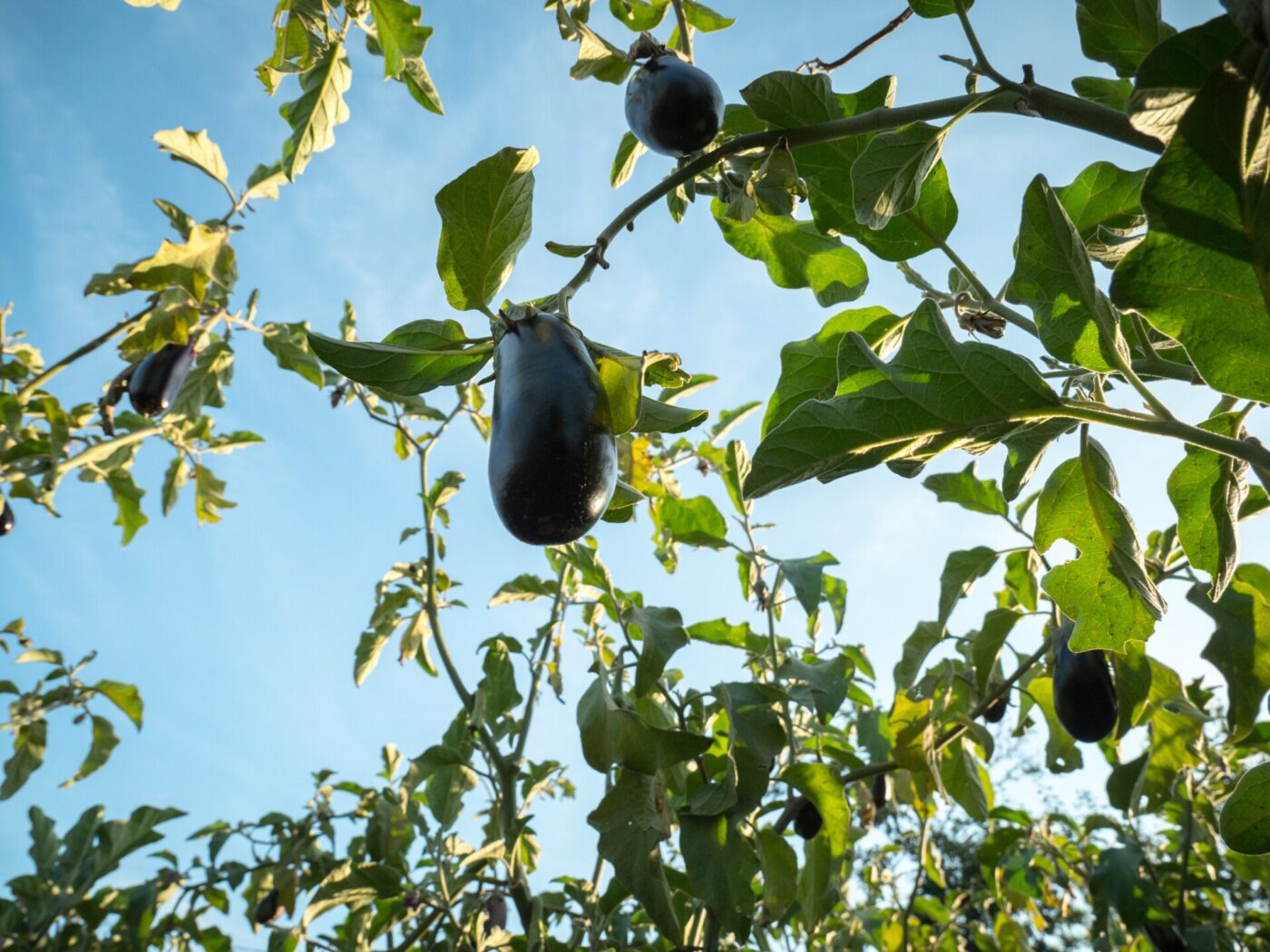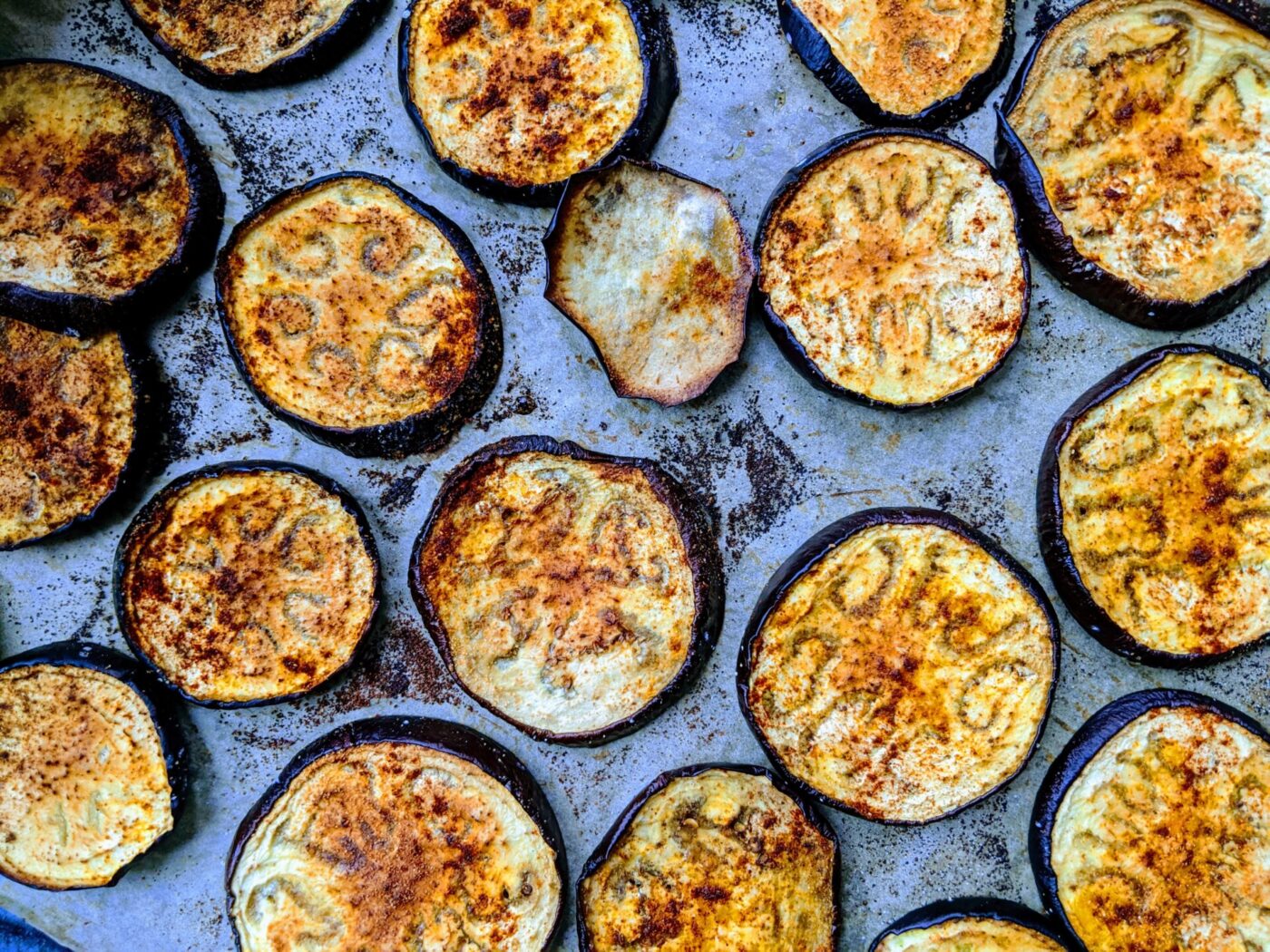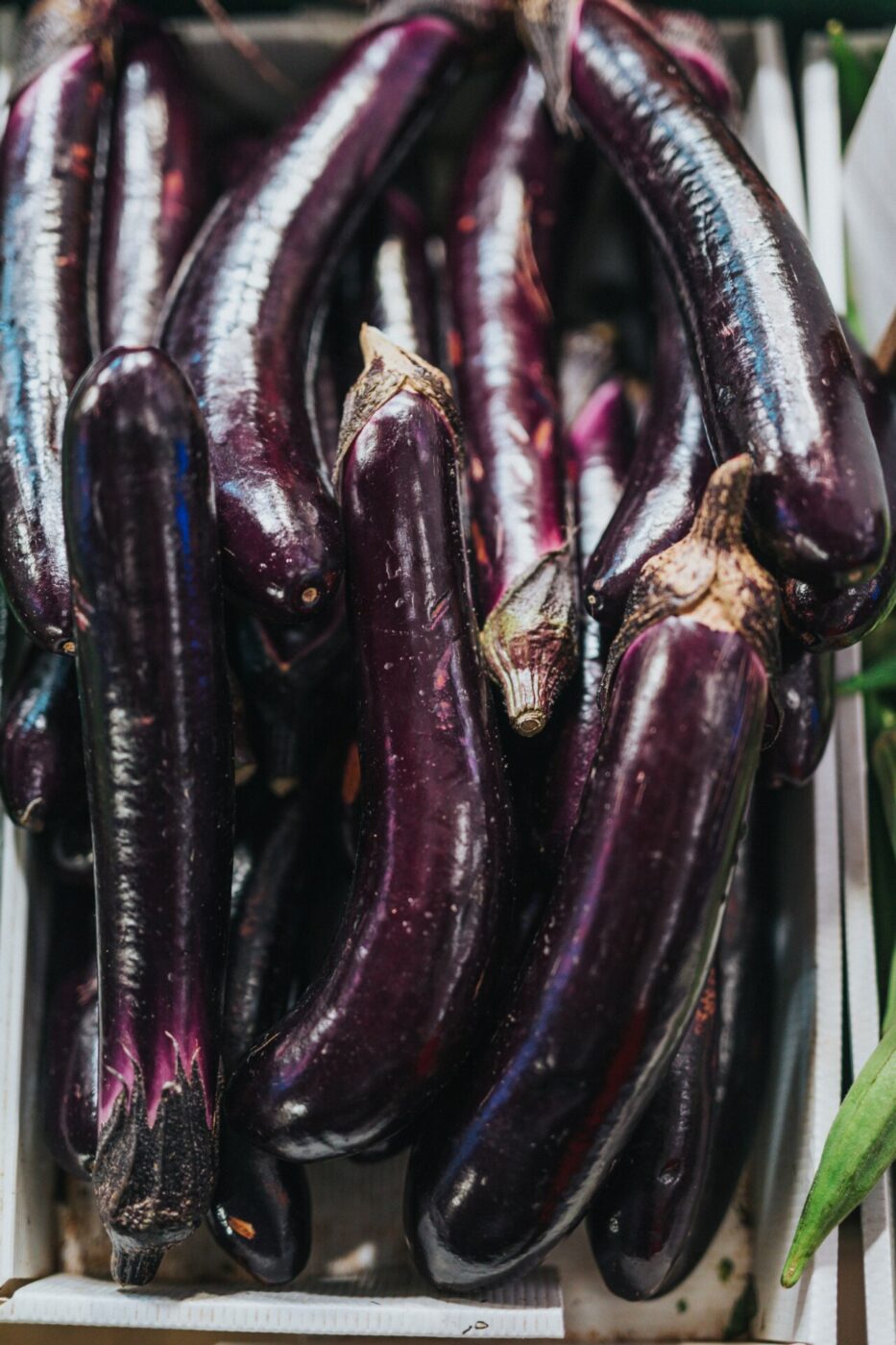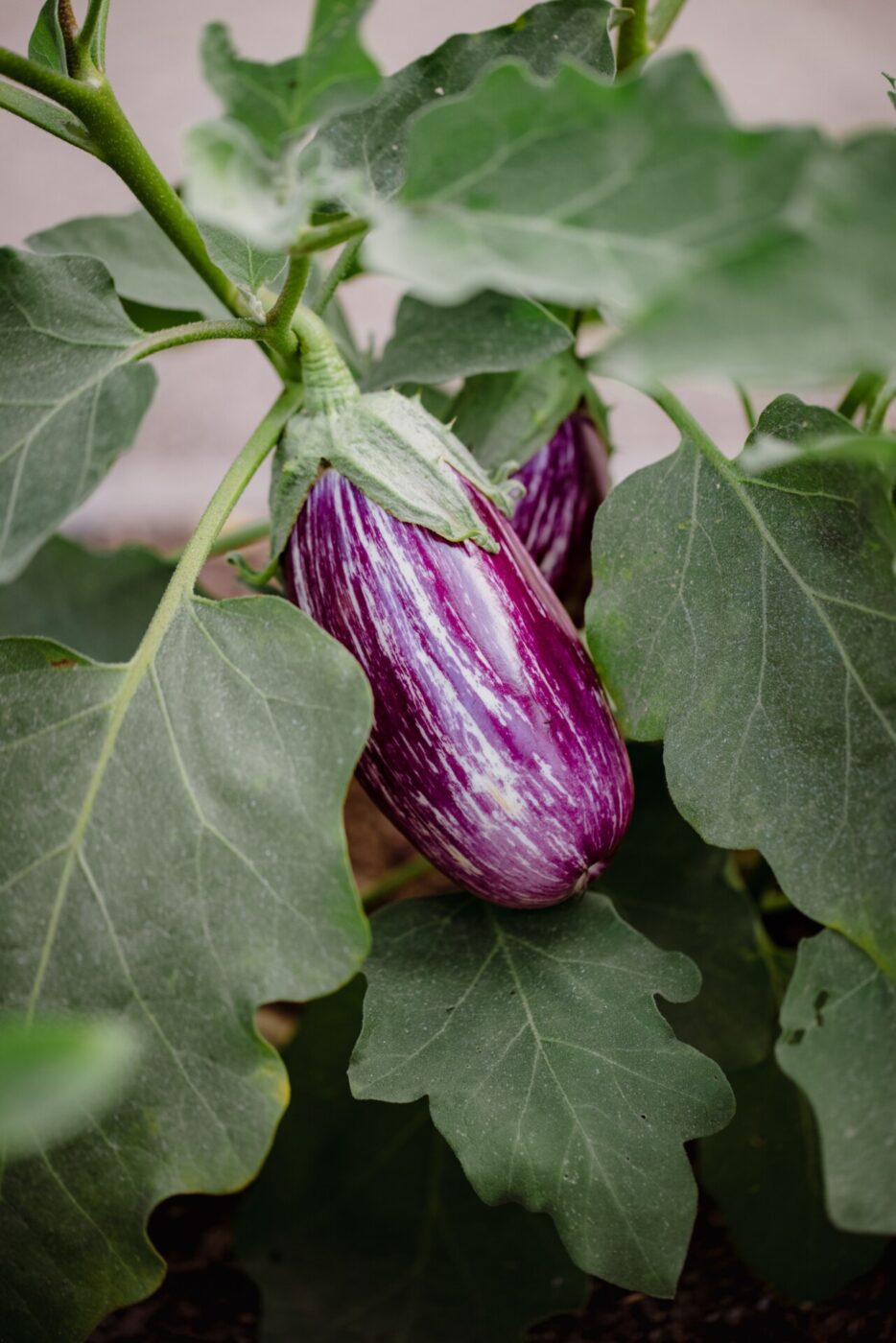Until about ten years ago, the eggplant and I were sworn enemies. Largely flavorless, tough in texture, and rather unappetizing with its strange oblong shape and bizarre-sounding moniker, it was but an unwanted discovery in a plate of ratatouille, or a dissatisfying replacement for meat in a particularly uninspired vegetarian dish. I picked it out of meals, dreaded its appearance in my parents’ kitchen, and generally circumvented it for years. And then, I went to Sicily.
With its unique combination of scorching sun, sparkling sea, volcanic rock, and mineral-rich soil, Sicily elevates everything it touches–and, as I soon discovered, the humble melanzana (eggplant) above all.
Believed to have originated in India, the eggplant was introduced to Sicily (and later, Europe at large) with the Arab domination of the 9th century—and quickly went from being an exotic curiosity to a staple of the Sicilian diet. At first, the bulbous vegetable was feared: the Italian name derives from the Latin mela insana, or “mad apple”, a Renaissance-era term that comes from the initial belief that consuming this strange-looking vegetable made people angry and full of melancholy. Most likely, it gained this reputation for the fact that, when consumed raw, eggplant contains a toxic compound that can be poisonous (but only in very vast quantities). Soon enough, however, the Sicilians began to experiment with cooking this foreign vegetable to make it their own—and today, they are one of the biggest producers and most skilled cooks of eggplant in the world.

Here on the island, it comes in endless varieties: small and slim, big and bulbous, vivid purple, marbled maroon, and even the prized “egg” white. Its usually-spongy texture is instead silky; its flavor surprisingly sweet. It’s anything but bland, and in the hands of local Sicilians, the eggplant is the undisputed Queen of Sicilian cuisine.
Grilled, fried, baked, sautéed; breaded for Palermo’s famous cotolette di melanzane; minced to make plump polpette; rolled into involtini and oozing with sugo, ham, and cheese; stuffed with anchovies, caciocavallo, and a touch of mint for melanzane ammuttunate; braised in a sweet-sour agrodolce sauce… The preparations I came across were endless, and each more delicious than the next.
The infinitely higher quality of vegetable on offer makes quite the difference, it turns out, as does its perfectly natural pairing with local olive oil, cheeses, and plump, tasty tomatoes–be it in the world-famous, sweet-and-sour caponata; classic pasta alla Norma; or in a rich, many-layered Parmigiana (more on these later). Stanley Tucci, in his hit show Searching For Italy, didn’t nickname Sicily “God’s kitchen” for nothing, after all.
But it’s the care and skill with which each melanzana is treated that allows this simple, inexpensive ingredient to truly shine–and that converted me for life. This, I soon realized, is something that is innately, inalienably Sicilian.
Endlessly conquered, mistreated, and misunderstood over the centuries, Sicily has long been one of the poorest regions in Europe, and yet it has managed to create one of the country’s richest cuisines. This is cucina povera at its very finest: “making do” with the cheapest and most readily available ingredients, respecting their value, and transforming them into flavor-packed dishes that are far more than the sum of their parts. Despite growing absolutely everywhere in Sicily and being traditionally used here as a replacement for meat, the melanzana is given the royal treatment and is always the protagonist of the plate.
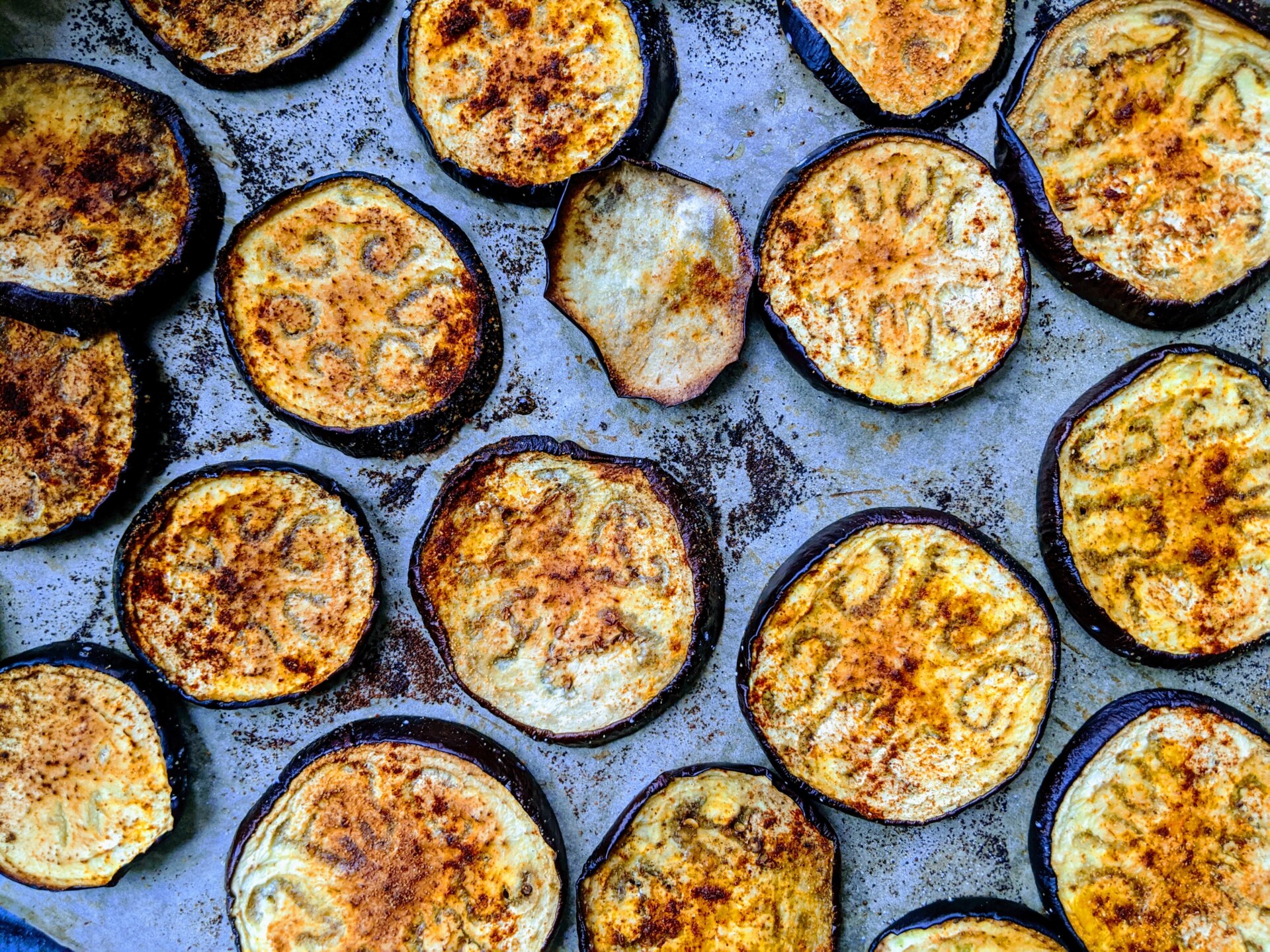
Today, Sicily’s eggplant-centric dishes are among its most famous–and act as a particularly delicious culinary tapestry of the island’s history too:
Pasta Alla Norma
Named after the world-famous opera Norma by Catania-born Vincenzo Bellini, pasta alla Norma is the unofficial dish of Sicilian summers: rigatoni or penne rigate with a sugo of fried eggplant, tomato sauce, and basil, topped with ricotta salata. A variation on this classic also comes in the form of the fabulously rich Timballo: a cake-like construction that contains pasta al sugo and is wrapped in thin, fried slices of eggplant. Divine.
Caponata
A typical island contorno (that’s just as delicious on its own), caponata is as perfect an articulation of the many-layered Sicilian cuisine as they come, mixing flavors and ingredients from its multi-cultural heritage. It’s salty, sour, and sweet all at once thanks to its unique combination of chunky eggplant, peppers, tomato, olives, tangy capers, plus a Middle Eastern embellishment courtesy of pine nuts and raisins (a particularly delicious overhang from the century-and-a-half that the Arabs ruled the island). Look out for variants even within regions: the Catanesi like to add potatoes for an even richer dish; in Agrigento, they add honey; and in Trapani, toasted almonds are scattered on top.
Parmigiana di Melanzane
The origins of this wonderful dish have always been hotly debated, but given Sicily’s long history with its star ingredient, we’re tending towards a strictly Sicilian provenance tale. Beyond the fact that the melanzana likely came to Sicily before the rest of the country (again, due to the Arab conquest), some also point to the name’s similarity to the local word parmiciana. This refers to the little wooden strips that form window shutters and recalls the pattern of how the eggplants are arranged in the dish. Usually composed of fried, thinly-sliced and meticulously layered eggplant, tomato sauce, fresh basil, and cheese, and then baked, some traditional recipes also call for scamorza and boiled eggs.





